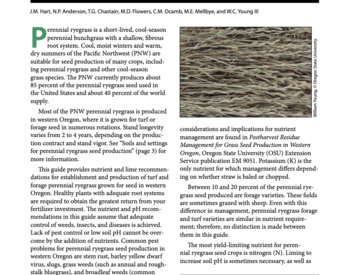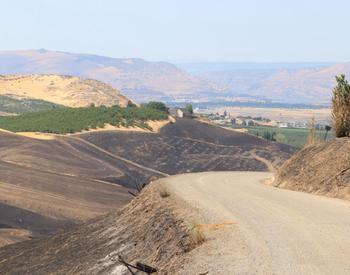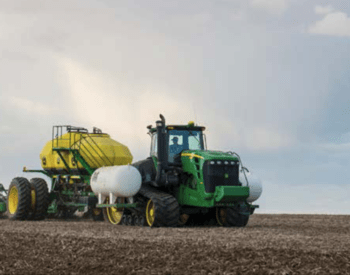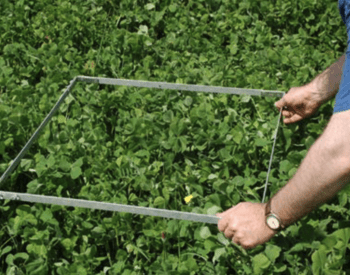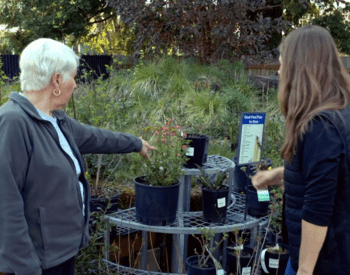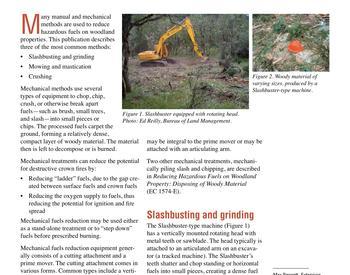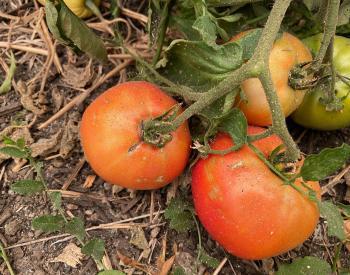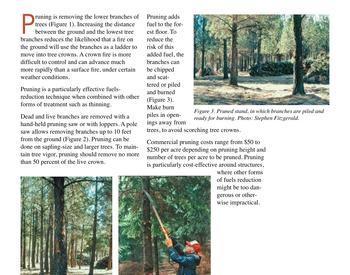Wildfires are burning across more agricultural lands than in the past across eastern Oregon due to a changing climate, increasing invasive annual grasses and changing farming practices that leave more residue on the soil surface to reduce erosion. In 2018, almost 120,000 acres of dryland wheat and rangeland burned in Wasco and Sherman counties. One of the 2018 fires, the Substation Fire swept north central Oregon – where wheat reigns as the premier crop – burned 80,000 acres and killed a farm employee. The Oregon Occupational Safety and Health Administration (OSHA) reacted by creating new wildfire training requirements in 2019 but without educational resources.
Under the Oregon OSHA requirements, farmers and ranchers who have employees are required to document plans for fires and medical emergencies. Employers and employees who suppress wildfires in crops and rangelands must also go through an initial training on the basic aspects of wildland firefighting, along with an annual refresher course. Many producers were unaware of the new OSHA rules and didn’t meet them.
The farming community has traditionally been overlooked when it comes to wildfire preparedness and firefighting resources. Farmers face increasing fire frequency, size and severity due to several factors, including climate change, the spread of invasive grasses and increased crop residue caused by changing farming practices. Because of unprecedented fires like the Substation Fire show no signs of slowing down, rural landowners are increasingly interested in disaster preparedness on their land, where training needs differ from the traditional focus on urban-rural boundaries and woodlands. The need for outreach is growing.
In response, Jacob Powell, an Oregon State University Extension Service crops and livestock expert with wildfire experience, had the knowledge and tools to make farmers aware of and in line with the new requirements. He hosted in-person and online classes in 2020 in which he explained the OSHA rules and provided training for firefighting safety and fire prevention.
In addition, Powell worked with a local wheat producer to develop emergency farm plans that both met the requirements and worked for farmers. In 2021 and 2022, programming continued to provide farmers with an annual wildfire refresher and additional learning opportunities. He coordinated and facilitated a roundtable discussion with local fire managers for landowners to learn how to report fires and work with first responders. Anyone who needed to document their training for the OSHA requirements was presented a certificate.
Powell has created an online course and is currently working on two additional online courses through OSU’s Professional and Continuing Education unit. In 2021, he hosted four webinars on wildfire preparedness, prevention and suppression covering everything from defensible space to livestock evacuation to grazing practices. In 2022 he organized nine wildfire-related events and presented at two other events related to wildfire preparedness. The 2022 trainings reached more than 160 people.
As a result, from 2020 through spring 2022, Powell had reached more than 600 people through his wildfire programming. The webinar recordings have had over 300 views on YouTube. He taught another 224 people through invited presentations covering wildfire preparedness.
According to a wildfire cost analysis, every dollar spent on wildfire prevention saves $35 in damages. That analysis likely needs to be adjusted for wildfires in agricultural areas of Oregon, but using that figure, the more than 50 direct management actions taken by participants in Powell’s trainings reduced approximately $945,000 in damages caused by wildfires. It’s difficult, however, to quantify the true benefit of these trainings in terms of reducing the impacts of wildfires to farmers’ mental and physical health.
Participants have left many positive reviews, with all agreeing the education was very effective. One summed it up, “We greatly appreciate having wildfire training available for our employees that focuses on crops and meets OSHA requirements. No one else is offering this material.”
In addition, 44% of the online course survey respondents said they were planning to take actions to improve wildfire defensible space and preparedness as a result of the trainings and 56% of participants planned to make changes in how they suppress agricultural wildfires as a result of the training.
